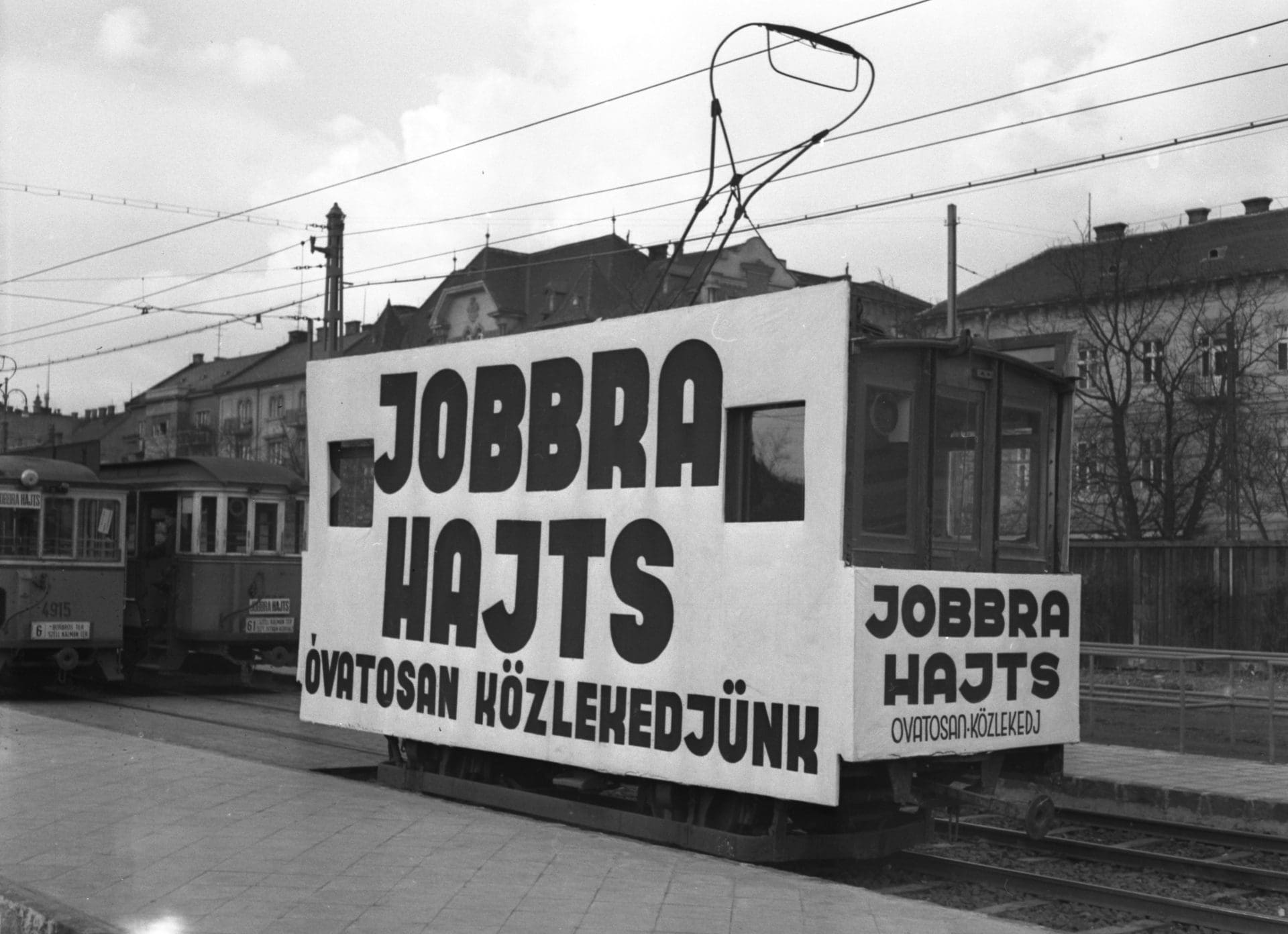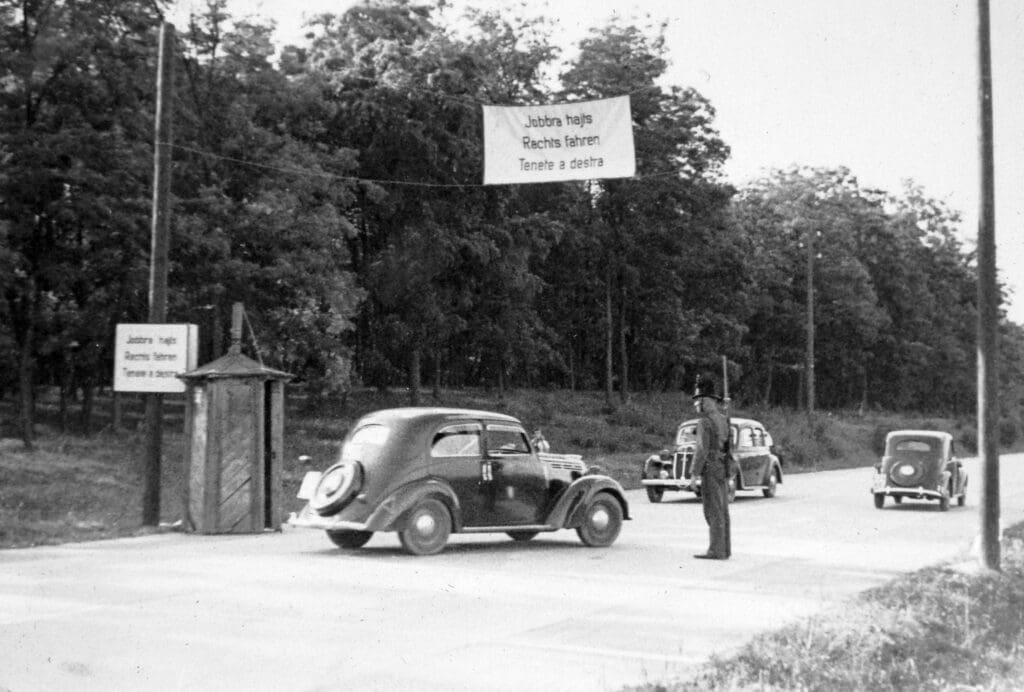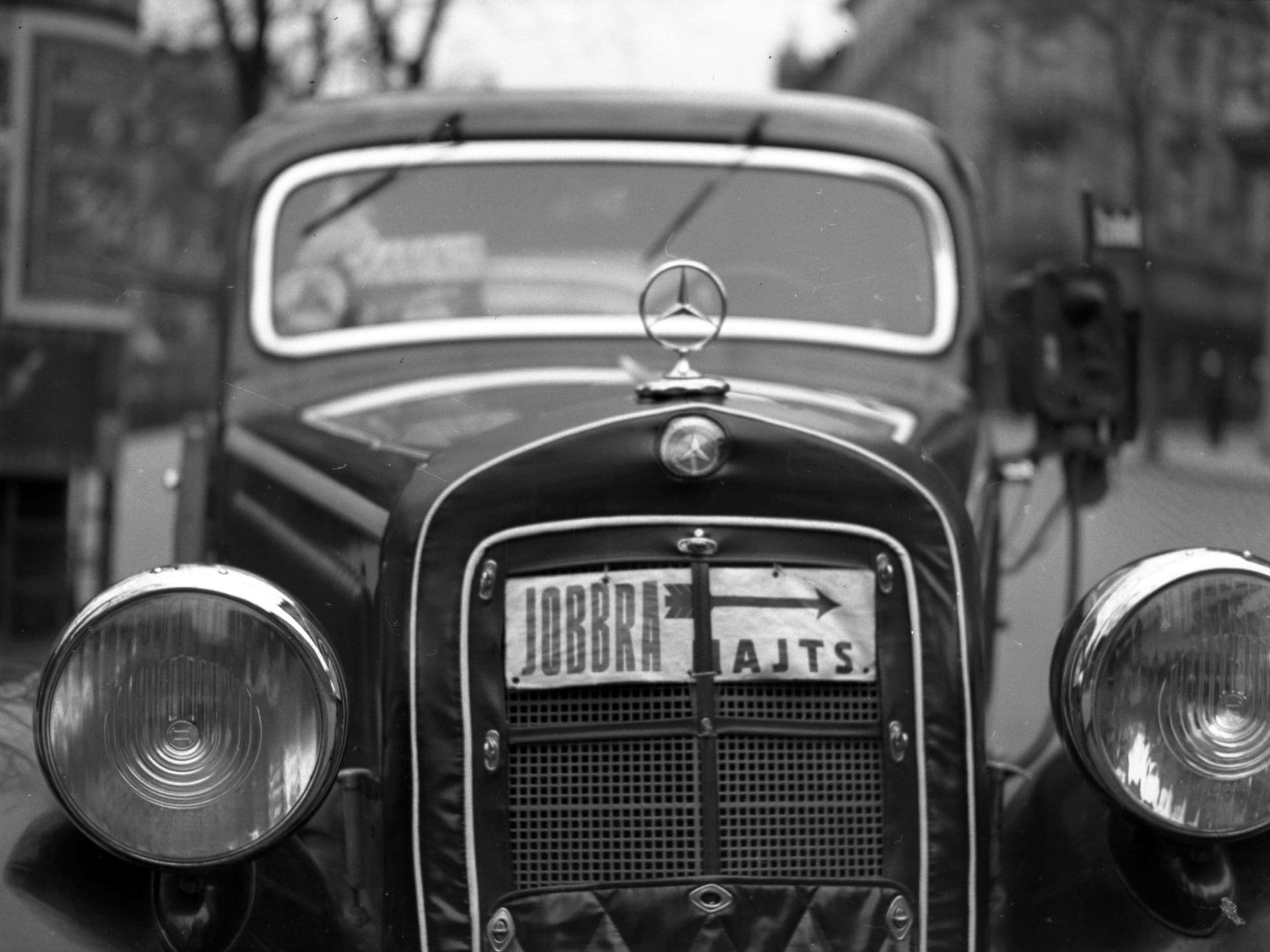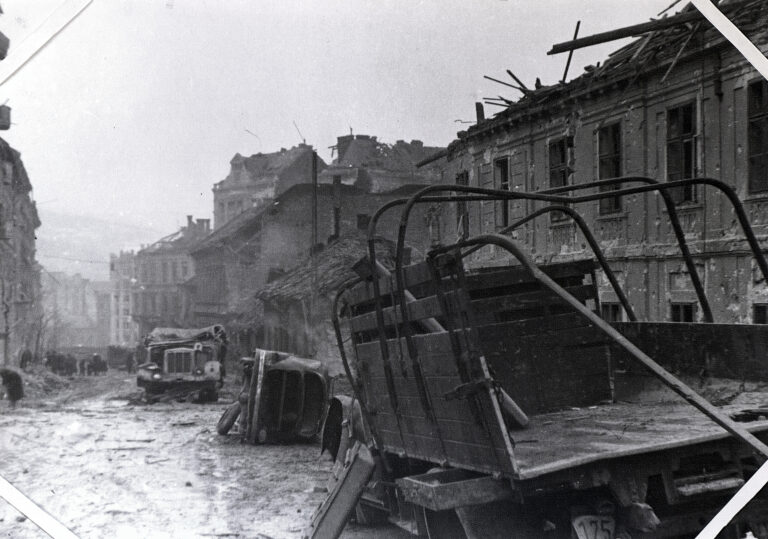Right-hand traffic has now become common not only on the European continent, but in a large part of the world as well—but this was not always the case. The spread of European right-hand traffic can be dated to the middle of the 20th century. Of course, Hungary did not want to be left out of the changes taking place on the continent; however, the establishment of the new order required creative solutions. That is why while most of Hungary switched to right-hand traffic quickly almost without any trouble, left-hand traffic was still in force in the capital for a few months afterwards, as part of a so-called grace period permitted by the city government.
Until the beginning of the 1700s, the rules of left-hand traffic were followed almost all over the world. There are many theories about the historical origin and reason for this, and according to some records, left-hand traffic was in force already in the ancient Roman Empire.
European left-hand traffic was clearly established under British influence and remained in use until the beginning of the 20th century, when several European cities switched to right-hand traffic, first Austria in 1938, and then Czechoslovakia in 1939.
The primary reason for this was the German Empire’s desire for European unification in the 1930s—with which it wanted to demonstrate its role as a world power.
Left-hand traffic in Hungary made it difficult for German soldiers to move around
Left-hand traffic in Hungary made it difficult for German soldiers and people from neighbouring countries who had already switched to right-hand traffic to move around, not to mention that it resulted in a slight decline of foreign tourism.
The idea of the change was first raised in 1939 as a result of the previously mentioned German influence, however, due to the outbreak of WWII, Hungary only switched to right-hand traffic in 1941. The transition took place on 6 July 1941.
Before the new rule of the road entered into force, the public was informed in as many forums as possible to prepare it for the change. For this purpose, nationwide radio reports and posters drew attention to the switch. The primary purpose of these campaigns was not only to inform the public, but also, of course, to avoid possible accidents resulting from the change.
The newspaper Kerék, for example, provided its readers with continuous up-to-date status reports on the transition to right-hand traffic.

It is interesting to note that right-hand drive cars were still allowed to travel in the country, which made the transition process easier.
It should also be mentioned that the change entailed huge costs: the relocation of tram and bus stops, the replacement of traffic signs, and making all other means facilitating the transition available ended up costing the Hungarian state 12 million pengő, which was the currency of Hungary at the time, and which was a rather high amount even by today’s standards.
While it was relatively easy to switch to right-hand traffic in the countryside, Budapest and its outskirts were given a delay due to increased traffic and the need to reorganise traffic lanes.
In practice, Budapest and its agglomeration continued to follow the rules of left-hand traffic for a few months after the switch.

The actual transition in Budapest was scheduled for 9 November. Traffic experts had only one night at their disposal to permanently change the direction of traffic. Understandably, most of the residents of the capital were afraid of the change, but finally, the preparation time and the plans proved to be effective.
On 9 November 1941, starting at 3 a.m., Hungary, the capital and its outskirts officially switched to right-hand traffic.
Click here to read the original article
Related Articles:







